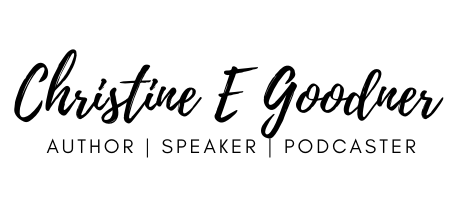This week’s episode of the Time to Practice podcast is the second in a two-part…
Unlocking What’s Possible: A Conversation with Christopher Maloney of Practice Warriors
Today, we’re speaking to Christopher Maloney of Practice Warriors. Christopher is a multi-instrumentalist who has performed and recorded with an impressive list of rock and pop musicians, some of whom he’ll share at the start of our interview below. He’s a former instructor and Department Chair at the world-renowned Musicians Institute in Los Angeles, a published author with Hal Leonard Publishing and he runs a website called Practice Warriors where he shares tips about practice, interviews with musicians, and resources for music students as a part of the membership there. He often shares articles and ideas about practice in his newsletter as well.
Although Christopher does not come from a classical musician background, which is more typical for my interviews, we both agreed after our conversation that there is so much overlap between our philosophies about practice and supporting young musicians and what they need to know to stay motivated and keep improving—so you won’t want to miss this conversation.

To Listen to the full episode you can find the Time to Practice Podcast on Apple Podcasts, Audible or your favorite podcast platform. You can also listen directly from the link below:

Unlocking What's Possible with Christopher Maloney of Practice Warriors – Time To Practice
Highlights from this Interview with Christopher Maloney of Practice Warriors:
On what Christopher Maloney has learned from interviewing musicians for Practice Warriors:
“What I notice is that everybody’s journey is the same, is that you get hooked by something. Whether you saw a performer, you heard a recording, a sibling left an instrument around that you just happened to grab. I mean they’re innocuous origin stories that are not really that incredible and a wide variety of starting at certain age groups. You know, I just interviewed Victor Wooten, one of the foremost bass players of this generation. He started when he was three years old. I interviewed my friend Katya Kerman, who played saxophone with Lady Gaga and Rod Stewart.
She didn’t start until she was 21. So you have this wide variety of origin stories. But then we come across, whether it’s two years, five years, 10 years, like my story, where you decide that you are going to go deep.
And what I mean by that, like, I went to high school, studied music, played in all the ensembles, went to college, got a music degree, but still, I didn’t, I hadn’t started the deep dive, the real intensive time of practice, which really changes everything where you go from a “amateur” to a “professional”. And every single person I’ve interviewed has had this, what I call woodshed period, you know, the, the old phrase, you go to the woodshed, and that’s where you’re really intensely practicing. And so the innocuous origin story, which everybody has, and then there is that moment where they decided to put the foot on the gas and to really commit.
And it’s always interesting to find out what was that turning point? What was, what gave them the drive to do that? Because then I think anybody could think of that and go, well, maybe I can get the drive to become my best musical self. And that, that doesn’t mean practicing five, six hours a day like we did, but maybe just practicing 30 minutes every day, which is more than they’ve maybe ever done. So I think that’s the exciting thing about those interviews is, is finding out what got ’em started and then what gave them the drive to become pro.”

Christopher Maloney’s practice tip for the Time to Practice podcast listeners:
“But I think the key to lasting musical improvement that literally ties every practice strategy together is having a practice log. To me if you are writing down every single day what it is that you are working on, then you can, not only will you stay consistent, not only will you know what you’re supposed to be doing, but you will also start to see results. You know, when athletes try to measure their improvement, they write down, you know, how fast did they run? How high did they jump, how much weight did they lift? And they see incremental changes each and every day. It’s how they monitor their progress.
And musicians, unfortunately, do not do that, but it should absolutely be done. What I used as a practice log was a spiral notebook . . . And I would just open my little thing and I’d write down February 13th, okay. I worked on my reading page 4, 8, 2, 2 measures, one through four. And then, I’d write down what else I worked on.
So the next day I opened the page, I get right to it, I write down how far I got, and then a month later you look back and go,” oh my gosh, look how far I’ve come”. And it goes right back to what we talked about at the beginning of our interview where now you can see the progress. You ain’t gonna see daily progress, not even weekly progress, but three, six months later – you look back at your former self and you go, “oh my gosh, look how far I’ve come. How much farther can I go?” So I cannot stress enough. Having a practice log to write down your daily activities is the key to long-lasting musical growth.”
You can listen to the full interview through the links above. Enjoy!
Links from this Episode with Christopher Maloney:
The Practice Warriors membership site: https://www.practicewarriors.com
YouTube Page: https://www.youtube.com/@practicewarriors
Instagram Page: https://www.instagram.com/practicewarriors
Facebook Page: https://www.facebook.com/practicewarriors
Connect with Christine on Instagram
This episode is brought to you by my practice workbook, Positive Practice
Transcript can be found below



This Post Has 0 Comments